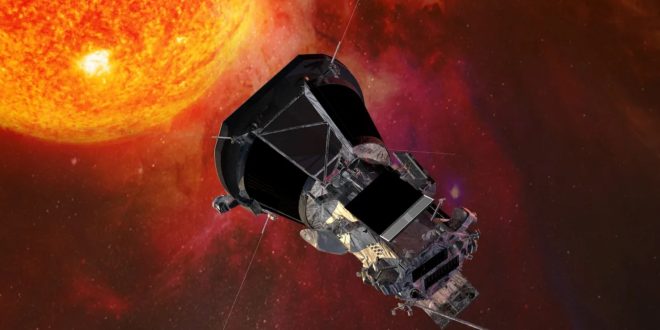The Parker Solar Probe flew through one of the largest plasma and magnetic field releases since we began watching the Sun last year, capturing incredible images and footage. Given the impact events like this can have on satellites and Earth, its survival is a testament to NASA’s preparation.
Coronal mass ejections (CME) are less well-known than solar flares and sunspots, but inner Solar System travelers must watch out for them. Protons and electrons in a strong magnetic field form CMEs. A geomagnetic storm caused by the Carrington Event in 1859 shocked and damaged telegraph operators, revealing their existence.
Since then, Earth hasn’t experienced anything like that, though smaller events have had worse effects in countries with more technology. Similar-sized CMEs have been seen and fired in other directions. Space is big, so most CMEs miss Earth.
Parker passed through a powerful CME racing away from the Sun on September 5, 2022, on its way to its closest solar approach the following day. NASA released an investigation. The brave probe has continued to collect data since, and the report reveals something about CMEs’ effects on the inner Solar System and the instrument sent to observe them.

Parker confirmed a 20-year-old theory that CMEs collect dust, ionize it, and push it away from the Sun, according to the study. “These interactions between CMEs and dust were theorized two decades ago, but had not been observed until Parker Solar Probe saw a CME act like a vacuum cleaner, clearing dust out of its path,” said Dr. Guillermo Stenborg of the Johns Hopkins Applied Physics Laboratory.
Asteroid collisions and comets melting their ice leave dust. It causes meteors and zodiacal light. CMEs may help comets shed more evenly, as they shed most near the Sun.
Parker observed that the CME cleared gas up to 10 million kilometers (6 million miles) from the Sun, but other material quickly replenished it.
“Parker has orbited the Sun four times at the same distance, allowing us to compare data from one pass to the next,” Stenborg said. “We isolated dust depletion variations by removing brightness variations due to coronal shifts and other phenomena.”
The Parker Solar Probe, which has broken records for speed and proximity to the Sun, is now a survivor. It was lucky to pass through the CME’s outskirts, but the encounter occurred less than 14 million kilometers (8.7 million miles) from the Sun, a tenth of Earth’s distance. CMEs arrive somewhat dispersed. Parker’s survival shows that instruments can be hardened against so many fast-moving charged particles.
The discovery may improve CME warnings. We can’t predict how fast CMEs will move as they cross the Sun-Earth gap, so current alerts are issued 30 minutes before storms. If dust interactions cause this uncertainty, Parker’s observations may help.
Parker used Venus’s gravity to reduce its orbit last month, bringing it closer to the Sun as the solar cycle heads toward its epic peak. A smaller CME caused spectacular auroras over Scandinavia, Canada, and parts of the US last night, and more could happen tonight.
 Tech Gadget Central Latest Tech News and Reviews
Tech Gadget Central Latest Tech News and Reviews




